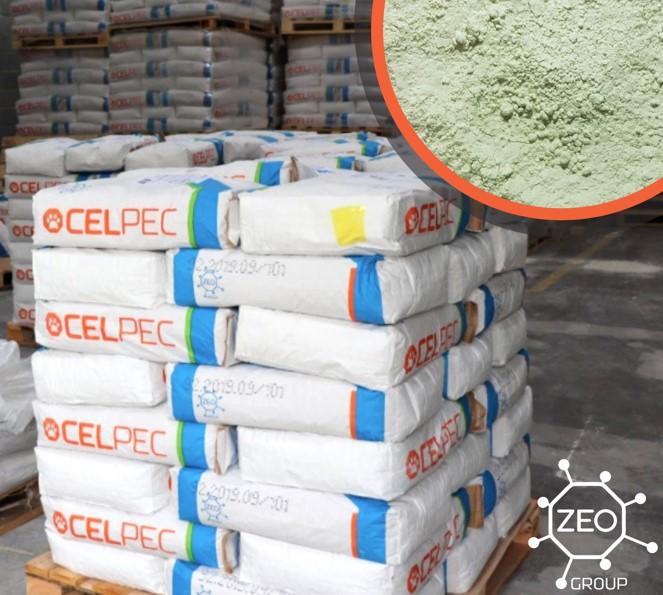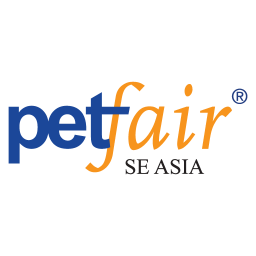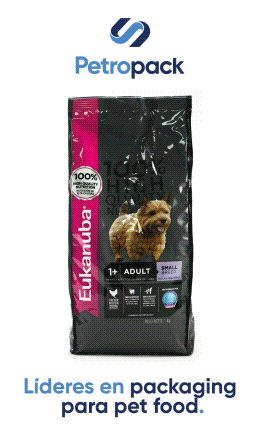On its 75th anniversary, WHO proposes a reflection on public health successes that have improved quality of life in recent decades and motivates actions to face the health challenges of today and tomorrow (WHO, 2023). With that same objective in mind, it is interesting that we also look at what has been done for the health of our pets and what we can do to further improve their quality of life and our mutual coexistence.
Pets are already members of many families around the world, gaining an important place in family relationships. Today in the United States, the largest pet market in the world, 70% of households have a pet, totaling 90.5 million households (APPA, 2022). With such a close relationship, there is an ever-increasing concern for animal health care, in order to improve their longevity and quality of life. In this sense, nutrition has a lot to contribute by providing nutrients in adequate quantity and quality to maintain a healthy life, in addition to additives that improve the use of these ingredients or improve the health of the gastrointestinal tract.
The zeolites are additives already used during many siglos in animal nutrition with several benefits involved in their use. Zeolite is the name given to a group of minerals of the aluminosilicate class (SiO4) whose main characteristic is the negatively charged tetrahedral crystalline conformation, responsible for the adsorption capacity of this material (COOMBS et al, 1997). Its pores allow the entry of cations along its structure, which remain united to the zeolite and, therefore, are not available for the animals to absorb them until another force releases this bond. Due to this high cation exchange capacity, zeolite acts by eliminating several potentially toxic cations from food, preventing serious poisonings from occurring.
Given that its crystalline structure is largely responsible for its mode of action, it is important to pay attention to the quality of the zeolite used, since a zeolite that has little crystalline material in its composition will not be as effective. Celpec is a pet food additive composed of 100% natural zeolite that is undergoes to rigorous quality controls before being sold.
Zeolites are well known for their ability to adsorb aflatoxins. Aflatoxins are a group of mycotoxins generated by fungi of the genus Apergillus, which cause liver intoxication and are carcinogenic (Leung et al., 2006). Despite being a controlled mycotoxin in many countries, several cases of outbreaks of food poisoning in dogs have been reported, being the most common cause of acute mycotoxin poisoning in these animals (Leung et al., 2006; Boermans, Leung, 2007). The ability to adsorb aflatoxins makes it possible to reduce the intoxication caused in animals that consume them. In vitro studies demonstrate that the inclusion of only 0.5% of Celpec was able to adsorb up to 88% of aflatoxin (Lamic). In a study carried out in vivo with broiler chickens, an improvement in food consumption was observed when comparing animals that consumed feed contaminated with alphatoxins (2.8ppm) to animals that consumed feed contaminated with aflatoxins (2.8ppm) and added 0.5% Celpec (Laboratório Samitec). In the same study, it was also possible to observe that the livers of the animals that received the addition of Celpec in the contaminated feed were less discolored than the livers of the animals that consumed the contaminated feed without any additive, demonstrating the ability to adsorb this mycotoxin and reduce intoxication caused by it.
Several studies corroborate the benefit as an aflatoxin adsorbent, with a reduction in the number of severe lesions in the liver of animals treated with clinoptilolite zeolite (Ortatatli and Oguz, 2001) and a decrease in their toxic effect even when the animals are chronically exposed (100ppb) (Orguz et al., 2000). Katsoulos et al. (2016) also observed a reduction of aflatoxin in the milk of cows when they consumed 200g of zeolite per cow per day, reducing the risks associated with the consumption of contaminated milk.
As well as being able to adsorb some types of mycotoxins, the high cation exchange capacity also allows zeolites to adsorb other potentially harmful substances that are positively charged, this can include some heavy metals like arsenic, cadmium, and lead. Presence of lead in pet food has been described in Brazil (Zafalon, 2020), Costa Rica (Narando-Jiménez and Wingching-Jones, 2023) and Italy (Serpe et al., 2012) as the only heavy metal present in all the samples tested (whether in small or larger quantities), this statement raises a warning flag regarding the importance of reducing the availability of this element to be absorbed, especially due to its potential for accumulation in important organs responsible for detoxification, as described by Serpe et al. (2012).
In this sense, zeolite can be an important ally. Beltcheva et al. (2014) observed a decrease in lead accumulation in the liver, kidneys and bones of rats that consumed natural modified zeolite in feed contaminated with high concentrations of lead.
In addition to the ability to adsorb toxins, zeolite has also been reported as an excellent aid in maintaining the health of animals, by acting on intestinal health. Novotný et al. (2019), when studying the effect of Celpec supplementation in piglets, observed that animals that consumed food with 2% Celpec had more consistent stools, with a significant decrease in the severity of diarrhea. Such results can be explained by the effect of decreasing gastrointestinal transit observed in several studies, which would allow greater use of nutrients and greater absorption of water in the tract (Prvulovic et al., 2007). An interesting parallel can be drawn with the findings in studies on dogs and cats consuming Celpec by Maia et al. (2010) and Roque et al. (2009), respectively, where the animals that consumed the additive had an improvement in the fecal score and a decrease in fecal odors. Furthermore, Novotný et al observed that while the control group had degenerative histopathological changes in the duodenum and jejunum, with smaller, disintegrated villi without epithelium, the group that consumed Celpec had comparatively larger villi with intact epithelium, which is also an important reason for the best fecal consistency of these animals. Similar results were observed by Wawrzyniak et al. (2017) in chickens, with an increase in the size of villi in the duodenum and ileum in animals that consumed 2% zeolite in the diet. Wu et al. (2013), also using zeolite in chickens, observed that in addition to the morphological improvement, the use of nautral zeolite decreased the presence of E. coli and increased Lactobacillus in the cecum. Prasai et al. (2016) found this same ability to modulate intestinal bacteria caused by the inclusion of zeolite in chicken feed. These authors reported a significant reduction in the Enterobachiteriaceae family (P=0.013), important and known pathogenic species such as Salmonella, Echericha, Shigella and Enterobacter belong to this family. In dogs, interesting results regarding the decrease in groups of potentially pathogenic bacteria and the increase in groups of beneficial bacteria were described by Sabbioni et al. (2016). This study showed an increase in the phylotypes Lactobacillus ssp. and Bifidobacterium ssp. which are groups widely used as probiotics, while decreased Enterobacteriaceae.

In view of the various studies presented here and many others available in the literature, the relevance of using zeolite in the diet of animals is clear, especially pets, in which longevity is highly valued, as well as quality of life, approaching much more of our way of life than many other species.
Source: Celta
Bibliographic references
Amercian Pet Products Association (APPA). Pet Industry Market Size, Trends & Ownership Statistics. 2022. In: https://www.americanpetproducts.org/press_industrytrends.asp. Access: 06/03/2023.
BELTCHEVA, M., METCHEVA, R., TOPSHKA-ANCHEVA, M. et al. Zeolites versus lead toxicity. J. Bioequiv. Availab, v. 7, p. 12-29, 2015. http://dx.doi.org/10.4172/jbb.1000209
BOERMANS, Herman J.; LEUNG, Maxwell CK. Mycotoxins and the pet food industry: toxicological evidence and risk assessment. International Journal of Food Microbiology, v. 119, n. 1-2, p. 95-102, 2007. https://doi.org/10.1016/j.ijfoodmicro.2007.07.063
COOMBS, Douglas S., ALBERT, A., ARMBRUSTER, T. et al. Recommended nomenclature for zeolite minerals: report of the subcommittee on zeolites of the International Mineralogical Association, Commission on New Minerals and Mineral Names. Mineralogical Magazine, v. 62, n. 4, p. 533-571, 1998. https://doi.org/10.1180/002646198547800
KATSOULOS, P. D., Karatzia, M.A., Boscos, C. et al. In-field evaluation of clinoptilolite feeding efficacy on the reduction of milk aflatoxin M1 concentration in dairy cattle. Journal of animal science and technology, v. 58, n. 1, p. 1-7, 2016. https://doi.org/10.1186/s40781-016-0106-4
LEUNG, Maxwell CK; DÍAZ-LLANO, Gabriel; SMITH, Trevor K. Mycotoxins in pet food: a review on worldwide prevalence and preventative strategies. Journal of agricultural and food chemistry, v. 54, n. 26, p. 9623-9635, 2006. https://doi.org/10.1021/jf062363+
MAIA, Gustavo Vaz Corrêa et al. Zeólitas e Yucca schidigera em rações para cães: palatabilidade, digestibilidade e redução de odores fecais. Revista Brasileira de Zootecnia, v. 39, p. 2442-2446, 2010. https://doi.org/10.1590/S1516-35982010001100017
NARANJO-JIMÉNEZ, Carolina; WINGCHING-JONES, Rodolfo. Arsenic, cadmium, mercury, and lead in imported pet food in Costa Rica. Agronomía Mesoamericana, v. 34, n. 1, 2023. https://doi.org/10.15517/am.v34i1.48399
NOVOTNÝ, J., REICHEL, P., BÁRDOVÁ, K. et al. The Effects of Clinoptilolite Administration on the Appetite, the Consistency of Faeces and the Histology of the Small Intestine in Growing Pigs. Folia Veterinaria, v. 63, n. 3, p. 47-52, 2019. https://doi.org/10.2478/fv-2019-0026
OGUZ, H.; KURTOGLU, V.; COSKUN, B. Preventive efficacy of clinoptilolite in broilers during chronic aflatoxin (50 and 100 ppb) exposure. Research in Veterinary Science, v. 69, n. 2, p. 197-201, 2000. https://doi.org/10.1053/rvsc.2000.0417
ORTATATLI, M.; OĞUZ, H. Ameliorative effects of dietary clinoptilolite on pathological changes in broiler chickens during aflatoxicosis. Research in Veterinary Science, v. 71, n. 1, p. 59-66, 2001. https://doi.org/10.1053/rvsc.2001.0487
PRASAI, T. P., WALSH, K. B., BHATTARAI, S. P. et al. Zeolite food supplementation reduces abundance of enterobacteria. Microbiological research, v. 195, p. 24-30, 2017. https://doi.org/10.1016/j.micres.2016.11.006
PRVULOVIĆ, D. et al. Effects of a clinoptilolite supplement in pig diets on performance and serum parameters. Czech J Anim Sci, v. 52, n. 6, p. 159-66, 2007. https://doi.org/ 10.17221/2317-CJAS
ROQUE, Natália Charleaux. Níveis de zeólita (clinoptilolita) e Yucca schidigera em raçoes de gatos adultos. 2009. Maesters dissertation. Universidade Federal de Lavras.
SABBIONI, A., FERRARIO, C., MILANI, C. et al. Modulation of the bifidobacterial communities of the dog microbiota by zeolite. Frontiers in Microbiology, v. 7, p. 1491, 2016. https://doi.org/10.3389/fmicb.2016.01491
SERPE, F. P. et al. Levels of heavy metals in liver and kidney of dogs from urban environment. Open veterinary journal, v. 2, n. 1, p. 15-18, 2012.
WAWRZYNIAK, A. et al. Effect of feeding transcarpathian zeolite on gastrointestinal morphology and function in broiler chickens. Brazilian journal of poultry science, v. 19, p. 737-746, 2017. https://doi.org/10.1590/1806-9061-2016-0360.
World Health Organization (WHO). 75 years of improving public health. 2023. In: https://www.who.int/campaigns/75-years-of-improving-public-health. Access: 27/03/2023.
WU, Q. J. et al. Effects of clinoptilolite and modified clinoptilolite on the growth performance, intestinal microflora, and gut parameters of broilers. Poultry Science, v. 92, n. 3, p. 684-692, 2013. https://doi.org/10.3382/ps.2012-02308
ZAFALON, Rafael Vessecchi Amorim. Determinação de metais pesados em ingredientes e alimentos comerciais para cães e gatos. 2020. Doctor thesis. Universidade de São Paulo.
You could be interested: The 27th Edition of Pet Fair Asia Will Take Place From 20 to 24 August 2025 in Shanghai, Marking The Largest Event in its History
Market Information
07/08/2025
The American Pet Products Association (APPA) Releases 2025 Dog & Cat Report, Revealing a New Era of Pet Ownership
29/07/2025

















































